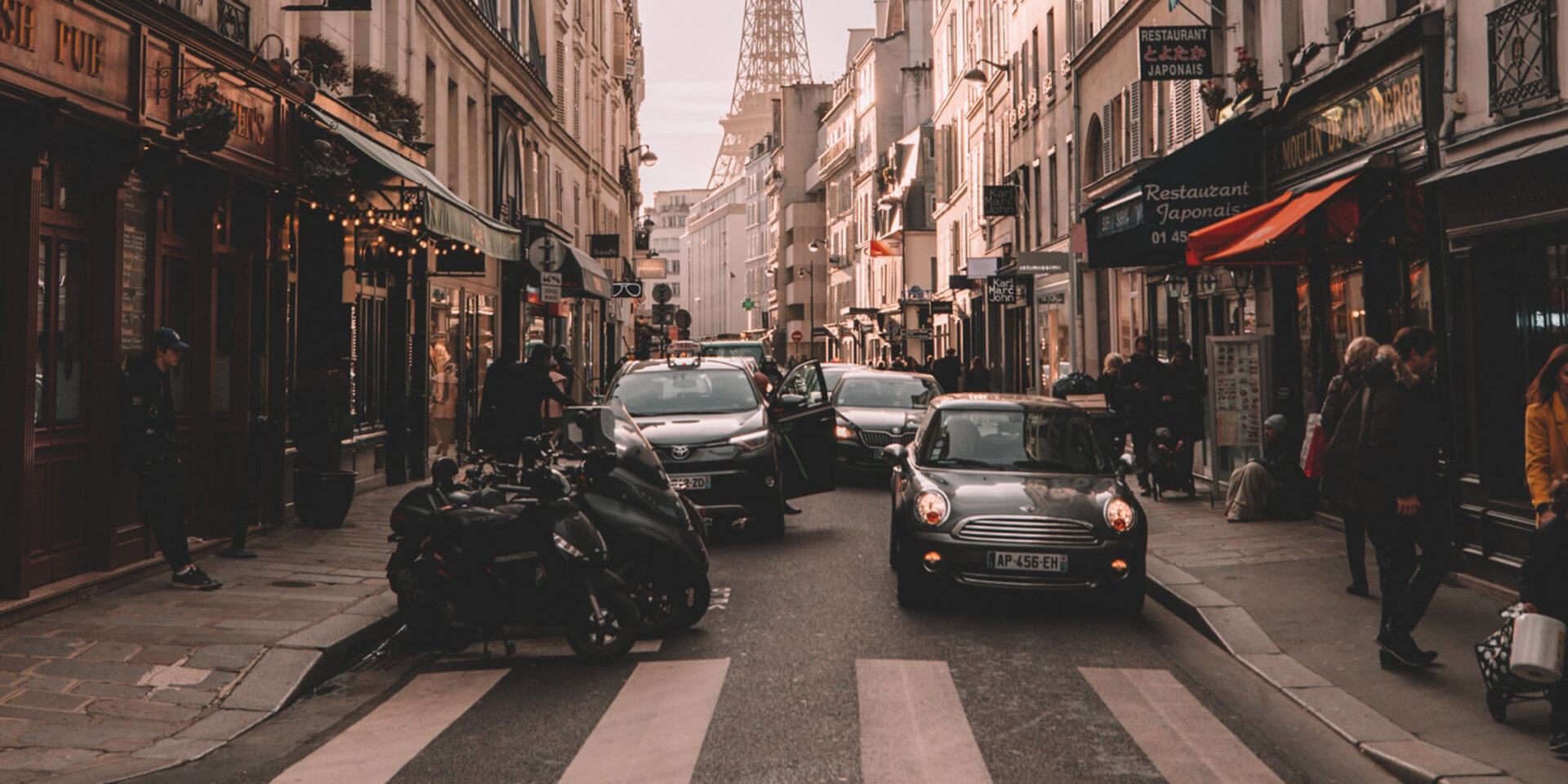Wide open spaces, clear roads, wonderful scenery, historic cities and fabulous beaches – it’s no wonder that France is a top choice for visitors and holidaymakers every year. It’s one of the most popular vacation destinations in the world, attracting millions of tourists every year.
And that includes the British: thousands of UK motorists choose France when it comes to planning a holiday. And thousands more will drive through France on their way to another European destination. But you’ll need some careful planning if you are intending to drive there.
The French shoreline is only 20 miles away from the UK at its narrowest point and easily accessible by tunnel or ferry. Yet driving in France is a completely different experience from doing so in the UK. And that doesn’t just mean the French drive on a different side of the road from us.
It’s much more than that and planning a driving holiday, or even taking your car to France on business, requires careful planning and a good understanding of what you can, and can’t do behind the wheel while on French roads.
This isn’t just for your safety and convenience. Getting on the wrong side of the French police can be expensive too, with tough on-the-spot fines and even confiscation of your car and its contents as penalties. So it’s well worth spending a couple of hours, while planning your trip, to make sure you have everything in place for your French excursion.
Here The Car Expert looks at the most important elements to consider if you’re going to be driving in France, and we’ve included a handy checklist. As each journey is unique, always check that you have everything covered for your particular visit.
Basic rules for driving in France
You have to be 18 years or over to drive in France and you must hold a full UK driving licence. Just the licence card will do, as the paper counterpart is no longer a requirement. You’ll need to prove that you have insurance cover (you don’t need a European ‘green card’) and you must carry with you documents that show the identity of the car, which in the UK means your red V5C ‘logbook’ from the DVLA.
Always carry your personal ID or passport with you everywhere, and if your car is more than three years old and has an MOT certificate, take that too. Ensure that your car is fully taxed before travelling.
The vehicle’s ‘home country’ must be shown on it. A ‘UK’ sticker is acceptable but a small UK badge on both number plates is also fine. The ‘GB’ badge is no longer allowed and the same goes for country badges such as the English, Scottish or Welsh flags. (Yes, it’s because of Brexit.)
French drivers are very good when it comes to lane etiquette. Keep to the-right hand lane as much as possible but if you are overtaking do so on the left. If traffic is moving slowly or queueing, you can pass on the right side. If you are towing a caravan ensure that your car and the ‘van don’t exceed 18.75 metres in length and 2.55 metres in width.
Seatbelt rules are the same as in the UK: if your car has them, they must be worn. It’s the driver’s responsibility to make sure everyone is buckled up. Children under ten years old must be in a back seat and should be in a child seat if they weigh less than 15kg.
It’s illegal to wear headphones or earpieces while driving, which is not the case in the UK, so be aware of this.
Speed limits
As with most countries in the world, France uses the metric system for speed and distance. So distances on road signs are shown in kilometres rather than miles, and speed limits are displayed in km/h (kilometres per hour) rather than mph (miles per hour).
Importantly, speed limits are different for dry or wet conditions. In the dry, motorway limits are 130 km/h, dual carriageways 110 km/h, A-roads 80 km/h and town roads 50km/h. These come down to 110, 100, 70 and 50 km/h respectively when it’s wet.
You are not allowed to have speed camera locator devices in your car and there are spot fines if you’re found with one. That includes satnav units with the camera detection built-in. If that’s the case, make sure yours is disabled before you drive.
Blood alcohol limit
Obviously, we don’t condone any kind of drinking before you get behind the wheel, but it’s important to know what the legal limit is.
In France, the blood alcohol limit is 0.2 g/l (0.02%) for new drivers, rising to 0.5 g/l (0.05%) if you have held your licence for more than three years.
By comparison, it’s 0.8 g/l (0.08%) in England and Wales, and 0.5 g/l (0.05%) in Scotland. So if you’re travelling from England or Wales, be aware that the threshold is much lower than what you’re used to.
Motorways
French motorways are known as autoroutes and are privately run. If you break down on an autoroute, you will be recovered by the road operator’s own trucks. They will take you to a designated safe area where you can plan to meet your own recovery provider or make other arrangements. It’s not a legal requirement to have a European roadside recovery plan but it’s certainly recommended.
The major motorways are paid for by tolls. You can pay using cash for many of these or, if you prefer, make contactless debit or credit card payments. Of course, if you’re in a right-hand-drive UK car and you don’t have a front passenger, you’re going to have to jump out and run around to pay the toll each time…
If you’d rather not have to stop at all, you can make prior arrangements to use a toll ‘tag’ such as Emovis or Liber-t, which allow you to use dedicated lanes to pass straight through the toll booths.
Low emission zones
Some French cities such as Paris, Lyons and Marseilles, have emissions limits for cars and you are required to display a clean air (Crit’Air) sticker that shows your vehicle’s emissions rating. More cities are likely to adopt these low-emissions zones in coming years so the list will almost vertainly grow.
To find out whether you’ll need a Crit’Air sticker, check out the French government website here. The stickers only cost about £4 and could save you from a £115 fine.
Even if you’re not planning on going to zones that require the sticker, it’s probably worth getting one anyway in case your plans change.
What to carry in the car
There are several items that the authorities in France will expect you to have in your car while motoring and you risk penalties if you can’t show them. These include a warning triangle for breakdowns and a reflective jacket or bib for you and every passenger, which you must be able to access from inside the vehicle. That means carrying them in the cabin, not in the boot (as you have to get out of the car to open the boot).
Headlamps must be set so that they don’t dazzle oncoming traffic. This can be adjusted manually in some cars while, for others, you can fit beam deflector stickers. It’s not mandatory to carry spare lightbulbs – mainly as it’s difficult to change bulbs in modern cars – but it’s still a recommendation. Snow chains are required in the winter months in certain ‘snow zones’.
Specialist suppliers, such as motoring organisations, sell ‘French driving kits’ for around £25, which contain everything required. That should include a first-aid kit in there, which is always useful to have in any instance. Some might contain a breathalyser, but these are no longer a requirement.
Checklist for driving in France
Must haves:
- Driving licence
- Passport
- Vehicle insurance
- MOT ceritificate
- V5 or vehicle ID
- UK (not GB) sticker or number plate markings
- Warning triangle
- headlamp beam deflectors
- First aid kit
- Hi-viz jackets for driver and each passenger
Options:
- Spare bulb kit
- Screen wash
- Bottled water
- Map or satnav
- Phone power bank
- Fire extinguisher
- Torch
- Fuel can
Read more:












